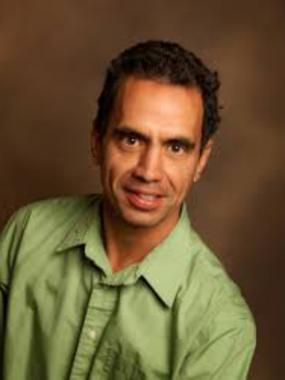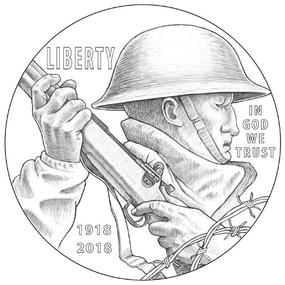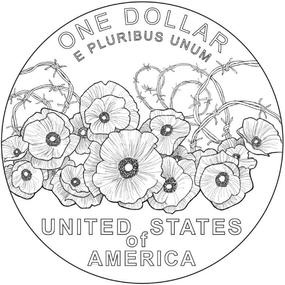The design of Kiwi-born member of The Church of Jesus Christ of Latter-day Saints, LeRoy Transfield, was selected by the United States Mint to adorn the 2018 World War I American Veterans Centennial silver dollar. A maximum of 400,000 of the limited-edition coins will be minted.

Inspired by his great uncle who fought in the Maori Battalion in World War I and other veterans who he has come to know while working on several war memorials in the United States, LeRoy said, “I (had) done very few low relief sculptures and no coins” but "all this excitement and energy flowed through me when I first got the news that I was a finalist. I so wanted to create a great design!”
The front of a coin is called the obverse side and the back is called the reverse side. LeRoy said that following a lengthy, laborious and often frustrating process of learning more about coin design and sculpting, the obverse side design concept came to him fairly quickly.
“I finally came up with the soldier profile, collar up and a rifle slung over his shoulder. This was not the final design but a good starting point.”
However, he felt the design still needed something more. “That night I had barbed wire going through my head. Soldiers charging barbed wire, wire in the dirt and finally, somehow, wire on my relief sculpture.”
But that was not all. Later he determined the relief needed hands, so the rifle would not be slung over the soldier’s shoulder, he would hold it. The design of the obverse side of the coin, titled “Soldier’s Charge," was done.

Originally LeRoy thought the reverse side of the coin should feature an eagle, the national bird of the United States. “I just knew it would look good. But when I fleshed it out, it looked terrible!”
Still believing a bird should be on the reverse side, Mr. Transfield remembered that pigeons were used extensively in World War I to carry communications. “I sculpted the bird as best I could but the final reverse looked not near as good as the obverse.”
Running out of time and frustrated that he had not yet finalized the design, he nevertheless took a break from his work to go biking and jump into the river with his daughter before she started school again. It was then that his head cleared and the inspiration finally came.
Standing on a bridge waiting to jump into the river “a thought came to me of using … barbed wire again in contrast to … poppies.” Transfield said, “the tradition of poppies on ANZAC (Australian and New Zealand Army Corps) Day played a huge role in finally deciding on the reverse design.”

The reverse side is titled “Poppies in the wire.”
Proof and uncirculated versions of the coin are expected to be available in January.
Among many others, Mr. Transfield’s previous works include memorials for several cities in Utah where he now resides, a bust of Matthew Cowley, an Apostle of The Church of Jesus Christ of Latter-day Saints, displayed in the Matthew Cowley Pacific Church History Centre in Temple View (Hamilton), New Zealand and a relief sculpture of Jesus Christ and the Apostles above the entry to the Church’s Newport Beach, California, Temple.
Mr. Transfield received his Bachelor of Fine Arts degree from Brigham Young University – Hawaii in 1993. He currently lives with his family in Orem, Utah.